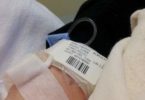What's in this article?
What is radiation therapy?
Radiation therapy uses high-energy radiation to shrink tumors and kill cancer cells. X-rays, gamma rays, and charged particles are types of radiation used for cancer treatment.
The radiation may be delivered by a machine outside the body (external-beam radiation therapy), or it may come from radioactive material placed in the body near cancer cells (internal radiation therapy, also called brachytherapy).
Systemic radiation therapy uses radioactive substances, such as radioactive iodine, that travel in the blood to kill cancer cells.
About half of all cancer patients receive some type of radiation therapy sometime during the course of their treatment.
How Radiation Works
Radiation therapy uses a special kind of high-energy beam to damage cancer cells. (Other types of energy beams include light and X-rays.) These high-energy beams, which are invisible to the human eye, damage a cell’s DNA, the material that cells use to divide.
Over time, the radiation damages cells that are in the path of its beam normal cells as well as cancer cells. But radiation affects cancer cells more than normal cells. Cancer cells are very busy growing and multiplying 2 activities that can be slowed or stopped by radiation damage. And because cancer cells are less organized than healthy cells, it’s harder for them to repair the damage done by radiation. So cancer cells are more easily destroyed by radiation, while healthy, normal cells are better able to repair themselves and survive the treatment.
There are two different ways to deliver radiation to the tissues to be treated:
- a machine called a linear accelerator that delivers radiation from outside the body
- pellets, or seeds, of material that give off radiation beams from inside the body
Tissues to be treated might include the breast area, lymph nodes, or another part of the body.
In some cases, your doctor may recommend hyperthermia be used in combination with radiation therapy. Hyperthermia (also called thermal therapy or thermotherapy) uses an energy source such as ultrasound or microwave to heat cancer cells to high temperatures, up to 113 degrees Fahrenheit. Early research has shown that hyperthermia may make some cancer cells more sensitive to radiation. Hyperthermia is still being studied in clinical trials and isn’t available everywhere. Hyperthermia and radiation are usually given within an hour of each other.
Some people may fear radiation therapy. They may worry that therapeutic radiation may be dangerous like an atomic bomb or nuclear power plant. Stories about radiation side effects, some of them exaggerated, can circulate around hospital waiting rooms. It’s important for you to know that there is NO connection between therapeutic radiation and the types of radiation in bombs and nuclear reactors. The radiation used in cancer treatment is highly focused, controllable, and generally safe.
Types of radiation therapy
External-beam radiation therapy. This is the most common type of radiation treatment. It delivers radiation from a machine located outside the body. It can treat large areas of the body, if needed. The machine used to create the radiation beam is called a linear accelerator or linac. Computers with special software adjust the size and shape of the beam. They also direct the beam to target the tumor while avoiding the healthy tissue near the cancer cells. External-beam radiation therapy does not make you radioactive.
Types of external-beam radiation therapy include:
- Three-dimensional conformal radiation therapy (3D-CRT): As part of this treatment, special computers create detailed three-dimensional pictures of the cancer. This allows the treatment team to aim the radiation more precisely. By doing this, they can use higher doses of radiation while reducing the risk of damaging healthy tissue. Studies have shown that 3D-CRT can lower the risk of side effects. For instance, it can limit the damage to the salivary glands, which can cause dry mouth, when people with head and neck cancer have radiation therapy.
- Intensity modulated radiation therapy (IMRT): This treatment directs the radiation dose at the tumor better than 3D-CRT by varying the intensity of the beam. IMRT protects healthy tissues from radiation better than 3D-CRT.
- Proton beam therapy: This treatment uses protons, rather than x-rays, to treat some cancers. Protons are parts of atoms that at high energy can destroy cancer cells. Directing protons at a tumor decreases the amount of radiation sent to nearby healthy tissue, reducing damage to this tissue. Because this therapy is relatively new and requires special equipment, it is not available at every medical center. The potential benefits of proton therapy compared to IMRT have not been established for some cancers, such as prostate cancer. Learn more about proton therapy.
- Stereotactic radiation therapy: This treatment delivers a large, precise radiation dose to a small tumor area. Because of the precision involved in this type of treatment, the patient must remain very still. Head frames or individual body molds are used to limit movement. Although this therapy is often given as a single treatment, some patients may need several radiation treatments.
Internal radiation therapy. This type of radiation treatment is also known as brachytherapy. Radioactive material is placed into the cancer itself or into the tissue surrounding it. These implants may be permanent or temporary and may require a hospital stay. Permanent implants are tiny steel seeds about the size of a grain of rice that contain radioactive material. These capsules are placed inside the body at the tumor site. The seeds deliver most of the radiation around the area of the implant. However, some radiation can be released from the patient’s body. This means the patient should take precautions to protect others from radiation exposure while the seeds are active. Over time, the implant loses its radioactivity, but the inactive seeds remain in the body.
For temporary implants, the radiation is delivered through needles, tubes that carry fluid in or out of the body called catheters, or special applicators. These implants are kept in the body for a specific amount of time, from a few minutes to a few days. Most temporary implant procedures deliver radiation for just a few minutes. If temporary implants are used for more time, the patient remains in a private room to limit others’ exposure to the radiation.
Common general side effects of radiation therapy
Radiation therapy is a local treatment. Therefore, it only affects the area of the body where the tumor is located. For example, people do not usually lose their hair from having radiation therapy. This is only true if the radiation is aimed at a part of the body that grows hair, such as the scalp.
Skin problems. Many people who receive radiation therapy experience dryness, itching, blistering, or peeling. These issues usually stop a few weeks after treatment has finished. If skin damage becomes a serious problem, the doctor may change your treatment plan.
Fatigue. Fatigue is feeling tired or exhausted almost all the time. Your level of fatigue depends on whether you are having other treatments, such as chemotherapy. Learn more about how to cope with fatigue.
Long-term side effects. Most side effects go away after treatment. But some continue, come back, or develop later. These late effects may include developing a second cancer. However, the risk of having a second cancer because of radiation therapy is low. This risk is often smaller than the benefit of treating the primary, existing cancer.
Treatment benefits for radiation therapy
The benefits of radiation strongly depend upon getting the full recommended dose without significant breaks.
These two elements of your treatment plan are vital because:
- The full dose of radiation is needed to get rid of cancer cells remaining after surgery.
- Radiation therapy is most effective when given continuously. In general, it is given every day, 5 days a week, for 5 to 7 weeks.
Also, by seeing your doctor regularly during and after treatment, you can best deal with any side effects and catch any possible cancer return as soon as possible.
Problems you might have with sticking to your radiation therapy plan:
- The treatment schedule may conflict with job demands, family needs, or the distance you live from the treatment facility. This may cause you to miss or postpone appointments.
- Skin irritation from radiation can cause soreness, peeling, and, sometimes, blisters. If you’ve also had lymph-node surgery, radiation treatment may worsen armpit discomfort. If you have these side effects, you might feel like stopping radiation.
Ways to overcome problems with staying on track:
- Talk with staff members at your radiation treatment center about your scheduling needs. They will try to work out an appointment schedule that’s as convenient as possible for you.
- Short-term interruptions of a day or two off from treatment are unlikely to reduce the effectiveness of radiation therapy. So if you need to take a short break, let your doctor know and get back on schedule as soon as possible.
- If you must miss a session, it can be added on to the end of your treatment schedule. Discuss this with staff at the radiation treatment center.
- Learn about side effects of radiation and how to manage them.
- If your skin is uncomfortably raw, ask your doctor about a stronger skin care program. Very occasionally, it may be necessary to take a brief break to allow the skin to recover. Talk to your doctor about how much time you can take off and how to get back on schedule as comfortably as possible.






I didn’t realize that radiation therapy could take place internally. Even though radiation has side effects like any other medication, it’s nice to know that it can help treat cancer. I bet those that go through radiation have a high rate of beating cancer. Thanks for sharing!